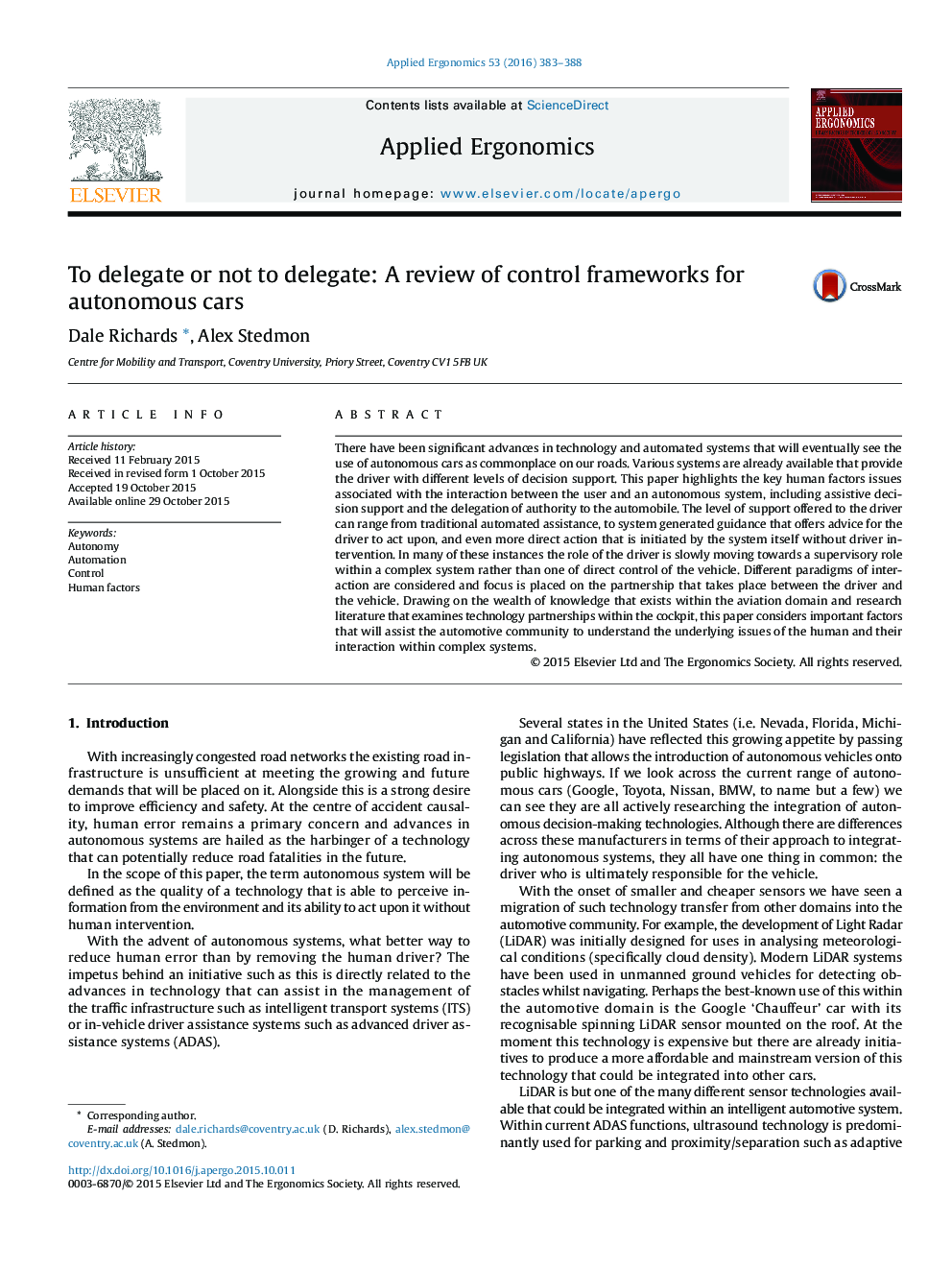| Article ID | Journal | Published Year | Pages | File Type |
|---|---|---|---|---|
| 548319 | Applied Ergonomics | 2016 | 6 Pages |
•We present the need for addressing human factors to autonomous cars.•We outline several different frameworks for delegating control authority between human and the system.•We focus on the partnership between the driver and the car and the decision making dynamic that needs to take place.
There have been significant advances in technology and automated systems that will eventually see the use of autonomous cars as commonplace on our roads. Various systems are already available that provide the driver with different levels of decision support. This paper highlights the key human factors issues associated with the interaction between the user and an autonomous system, including assistive decision support and the delegation of authority to the automobile. The level of support offered to the driver can range from traditional automated assistance, to system generated guidance that offers advice for the driver to act upon, and even more direct action that is initiated by the system itself without driver intervention. In many of these instances the role of the driver is slowly moving towards a supervisory role within a complex system rather than one of direct control of the vehicle. Different paradigms of interaction are considered and focus is placed on the partnership that takes place between the driver and the vehicle. Drawing on the wealth of knowledge that exists within the aviation domain and research literature that examines technology partnerships within the cockpit, this paper considers important factors that will assist the automotive community to understand the underlying issues of the human and their interaction within complex systems.
